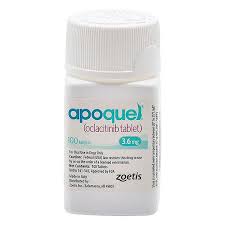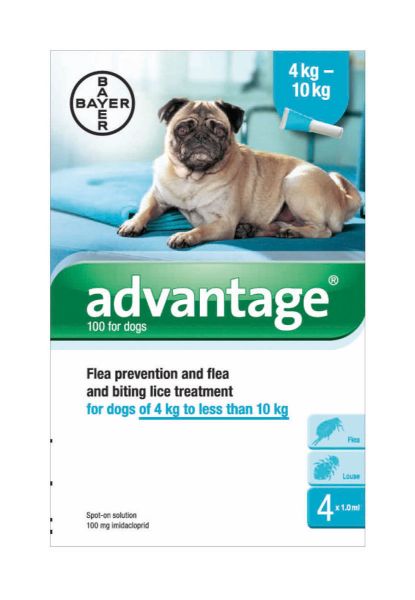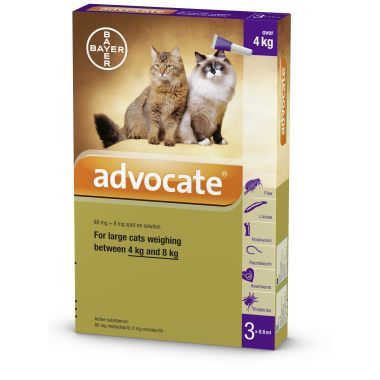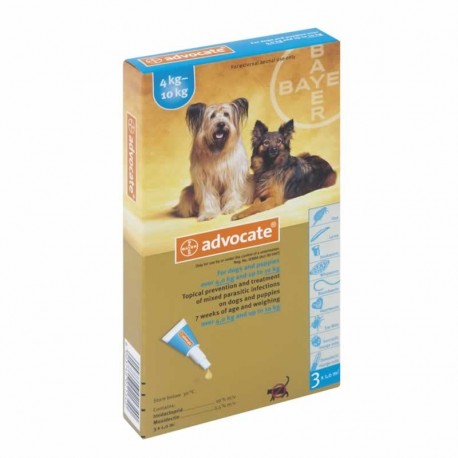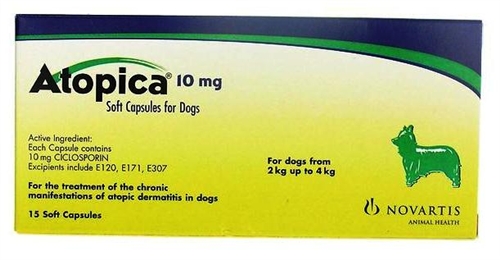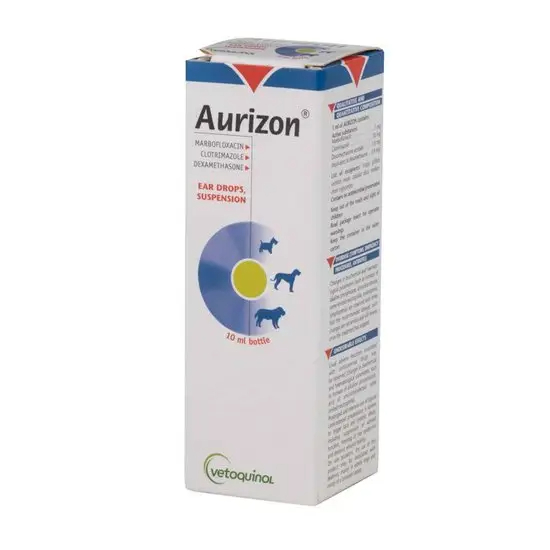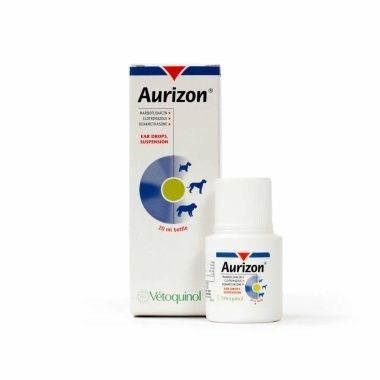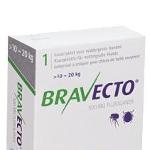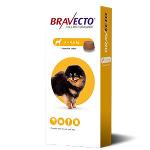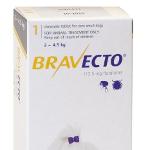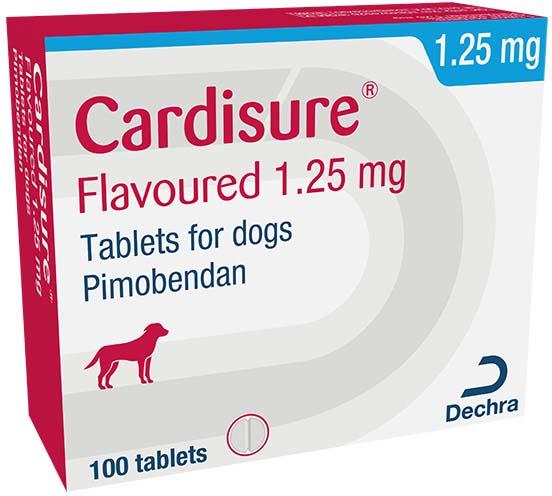Apoquel chewable tablets for dogs Species: Dogs Therapeutic indication: Pharmaceuticals: Miscellaneous Active ingredient: Oclacitinib Maleate Product:Apoquel chewable tablets for dogs Product index: Apoquel chewable tablets Presentation Apoquel chewable tablets contain 3.6, 5.4 or 16 mg oclacitinib (as oclacitinib maleate). Light to dark brown pentagon shaped mottled tablets, with score lines on both sides. The tablets are debossed with the corresponding strength ((“S S” for 3.6 mg, “M M” for 5.4 mg and “L L” for 16 mg). The tablets can be divided into equal halves. Uses Indicated for the treatment of pruritus associated with allergic dermatitis and the clinical manifestations of atopic dermatitis in dogs. Dosage and administration For oral use. Dosage and treatment schedule The recommended initial dose is 0.4 to 0.6 mg oclacitinib/kg bodyweight, administered orally, twice daily for up to 14 days. For maintenance therapy, the same dose (0.4 to 0.6 mg oclacitinib/kg bodyweight) should then be administered only once a day. The requirement for long-term maintenance therapy should be based on an individual benefit-risk assessment. Apoquel tablets are chewable, palatable and readily consumed by the majority of dogs. These tablets can be administered with or without food. The dosing table below shows the number of tablets required. The tablets are breakable along the score line. Bodyweight (kg) of dog Number and strength of tablets to be administered Initial dose (twice daily) / Maintenance therapy (once daily) 3.6 mg 5.4 mg 16 mg 3.0 - 4.4 1⁄2 4.5 - 5.9 1⁄2 6.0 - 8.9 1 9.0 - 13.4 1 13.5 - 19.9 1⁄2 20.0 - 26.9 2 27 - 39.9 1 40.0 - 54.9 1 1⁄2 55 - 80.0 2 Contra-indications, warnings, etc Do not use in cases of hypersensitivity to the active substance or to any of the excipients. Do not use in dogs less than 12 months of age or less than 3 kg bodyweight. Do not use in dogs with evidence of immune suppression, such as hyperadrenocorticism, or with evidence of progressive malignant neoplasia as the active substance has not been evaluated in these cases. The safety of Apoquel chewable tablets has not been established during pregnancy and lactation, or in breeding male dogs, therefore its use is not recommended during pregnancy, lactation or in dogs intended for breeding. Oclacitinib modulates the immune system and may increase susceptibility to infection and exacerbate neoplastic conditions. Dogs receiving Apoquel tablets should therefore be monitored for the development of infections and neoplasia. When treating pruritus associated with allergic dermatitis with oclacitinib, investigate and treat any underlying causes (e.g. flea allergic dermatitis, contact dermatitis, food hypersensitivity). Furthermore, in cases of allergic dermatitis and atopic dermatitis, it is recommended to investigate and treat complicating factors, such as bacterial, fungal or parasitic infections/infestations (e.g. flea and mange). Given the potential for effects on certain clinicopathological parameters periodic monitoring with complete blood counts and serum biochemistry is recommended when dogs are on long-term treatment. The tablets are flavoured. In order to avoid accidental ingestion, store tablets in a safe place out of reach of animals. The common adverse reactions seen up to day 16 of the field trials are listed in the following table: Adverse reactions observed in atopic dermatitis study up to day 16 Adverse reactions observed in pruritus study up to day 7 Apoquel (n=152) Placebo (n=147) Apoquel (n=216) Placebo (n=220) Diarrhoea 4.6% 3.4% 2.3% 0.9% Vomiting 3.9% 4.1% 2.3% 1.8% Anorexia 2.6% 0% 1.4% 0% New cutaneous or subcutaneous lumps 2.6% 2.7% 1.0% 0% Lethargy 2.0% 1.4% 1.8% 1.4% Polydipsia 0.7% 1.4% 1.4% 0% After day 16, the following adverse reactions have been observed: − pyoderma and non-specified dermal lumps have been observed very commonly; − otitis, vomiting, diarrhoea, histiocytoma, cystitis, yeast skin infections, pododermatitis, lipoma, polydipsia, lymphadenopathy, nausea, increased appetite and aggression have been observed commonly. Treatment-related clinical pathology changes were restricted to an increase in mean serum cholesterol and a decrease in mean leukocyte count, however, all mean values remained within the laboratory reference range. The decrease in mean leukocyte count observed in oclacitinib-treated dogs was not progressive, and affected all white blood cell counts (neutrophil, eosinophil and monocyte counts) except lymphocyte counts. Neither of these clinical pathology changes appeared clinically significant. The development of papillomas was noted in a number of dogs in a laboratory study. Anaemia and lymphoma have been reported very rarely in spontaneous reports. The frequency of adverse reactions is defined using the following convention: − very common (more than 1 in 10 animals treated displaying adverse reaction(s)) − common (more than 1 but less than 10 animals in 100 animals treated) − uncommon (more than 1 but less than 10 animals in 1,000 animals treated) − rare (more than 1 but less than 10 animals in 10,000 animals treated) − very rare (less than 1 animal in 10,000 animals treated, including isolated reports). No drug interactions were observed in field studies where oclacitinib was administered concomitantly with veterinary medicinal products such as endo- and ectoparasiticides, antimicrobials and anti-inflammatories. The impact of oclacitinib administration on vaccination with modified live vaccines, canine parvovirus (CPV), canine distemper virus (CDV) and canine parainfluenza (CPI) and inactivated rabies vaccine (RV), on 16 week old vaccine naïve puppies has been studied. An adequate immune response (serology) to CDV and CPV vaccination was achieved when puppies were administered oclacitinib at 1.8 mg/kg bodyweight twice daily for 84 days. However, the findings of this study indicated a reduction in serological response to vaccination with CPI and RV in puppies being treated with oclacitinib compared to untreated controls. The clinical relevance of these observed effects for animals vaccinated while being administered oclacitinib (in accordance with the recommended dosing regimen) is unclear. Oclacitinib tablets were administered to healthy, one year old Beagle dogs twice daily for 6 weeks, followed by once per day for 20 weeks, at 0.6 mg/kg bw, 1.8 mg/kg bw and 3.0 mg/kg bw for a total of 26 weeks. Clinical observations that were considered likely to be related to oclacitinib treatment included: alopecia (local), papilloma, dermatitis, erythema, abrasions and scabbing/crusts, interdigital "cysts", and oedema of the feet. Dermatitis lesions were mostly secondary to the development of interdigital furunculosis on one or more feet during the study, with the number and frequency of observations increasing with increasing dose. Lymphadenopathy of peripheral nodes was noted in all groups, increasing in frequency with increasing dose, and was frequently associated with interdigital furunculosis. Papilloma was considered treatment related, but not dose related. There is no specific antidote and in case of signs of overdose the dog should be treated symptomatically. User warnings Wash hands after administration. In case of accidental ingestion, seek medical advice immediately and show the package leaflet or the label to the physician. Ingestion of this product may be harmful for children. To avoid accidental ingestion, administer the tablet(s) to the dog immediately after removal from the blister packaging. Pharmaceutical precautions Store in the original package in order to protect from moisture. Remaining tablet parts should be stored in the blister and be given at the next administration. Do not use after the expiry date which is stated on the blister or carton. Any unused veterinary medicinal product or waste materials derived from such veterinary medicinal products should be disposed of in accordance with local requirements. Keep out of the sight and reach of children. For animal treatment only.

